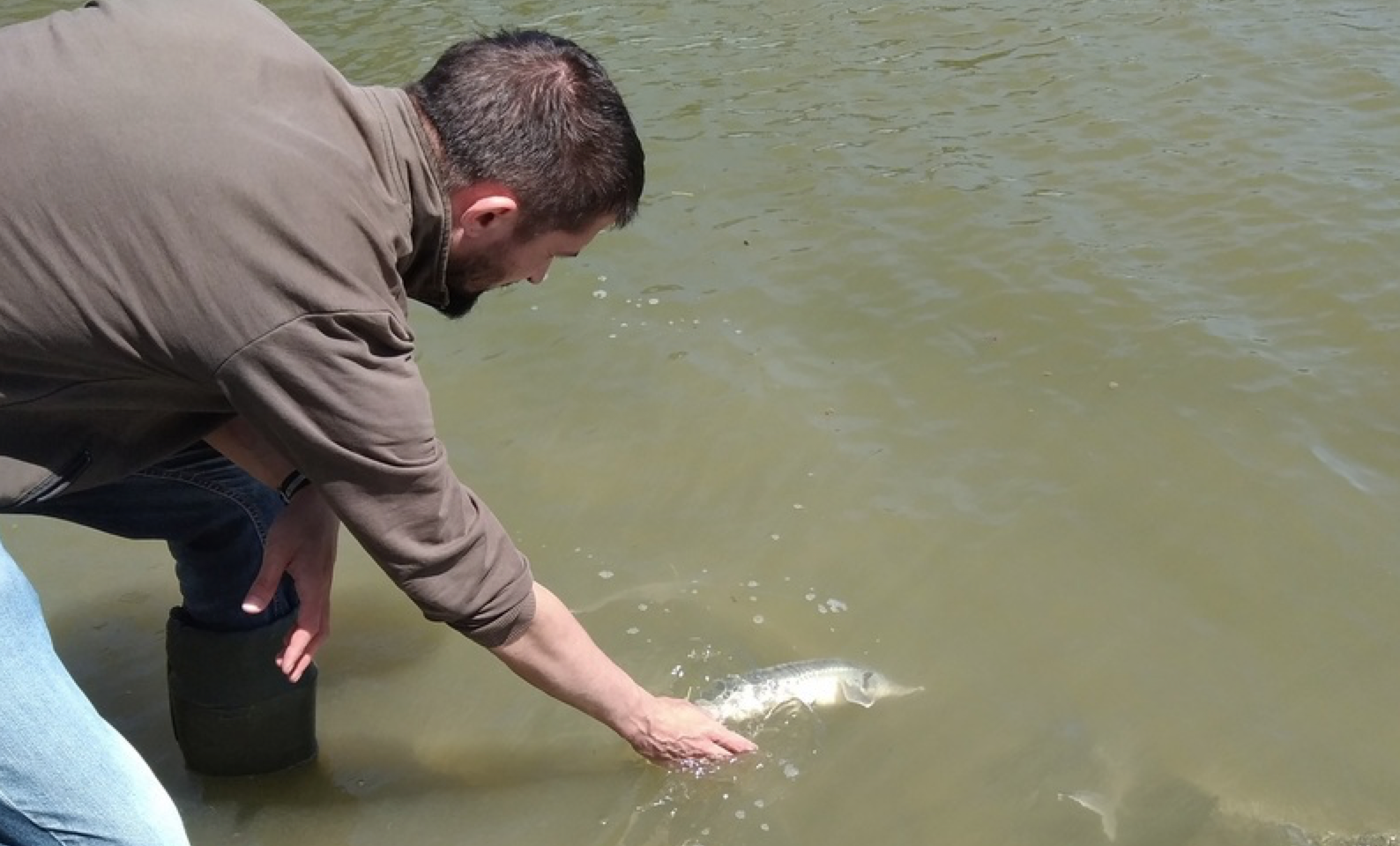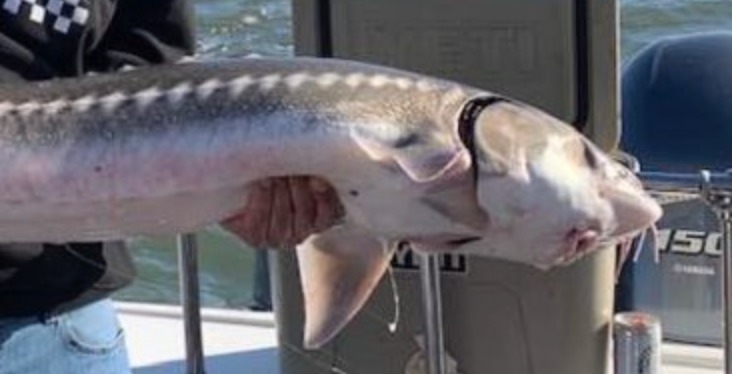THE DANUBE RIVER STURGEON POPULATION GROWS, DESPITE THE COVID-19 CRISIS
Danube Transnational Programme MEASURES
Interreg Newsletter
A year ago, in the first half of 2019, 5,000 juvenile sterlets (Acipenser ruthenus) were released in Hungary, and more than 1,000 of Russian sturgeons (Acipenser gueldenstaedtii) in Romania. This year, despite the pandemic, stocking events continue, with another 1,800 fish swimming free in the Danube, bringing the total to 7,800 sturgeons released as part of the MEASURES Project.
“Conservational restocking is one of many necessary actions to save endangered fish”, says Thomas Friedrich, University of Natural Resources and Life Sciences, Vienna.
The sterlet restocking was managed by NAIK-HAKI, a project partner in MEASURES, and the event took place at Baja (Hungary) between 13-15th May, 2020. In total, 1,500 fish were restocked during these three days. The fish were more than 1 year old and have good survival chances in the wild. They were also tagged with T-bar plastic anchor tags (yellow), which will make it easy to identifly them in case they are recaptured by in-situ surveys, or anglers. A recapture survey is planned at the end of 2020 in Hungary, this will provide further insight about the success of restockings.
Last month, 300 juvenile Russian sturgeons were also released into the Danube River, this time at Isaccea, in Romania. “The fish were released after being previously individually tagged with PIT (Passive Integrated Transponder) microchips. Taking into account that commercial fishing of sturgeon is prohibited in Romania, we consider that sturgeons have a high chance of safely reaching the sea to grow and to return to the Danube for reproduction,” says Marian Tudor, Danube Delta National Institute for Research and Development.
The Russian Sturgeon, along with the Starry Sturgeon (Acipenser stellatus), the European Sea Sturgeon (Acipenser sturio) and the Beluga Sturgeon (Huso Huso) are on a list of marine species which need to be protected, according to a Ministerial Order which was published in The Official Journal of Romania, this April.
This list is to be transmitted to the Permanent Secretariat of the Black Sea (part of the Black Sea Convention), in order to be included in the Black Sea Red Data Book, which is updated every 5 years on the basis of scientific evidence.





